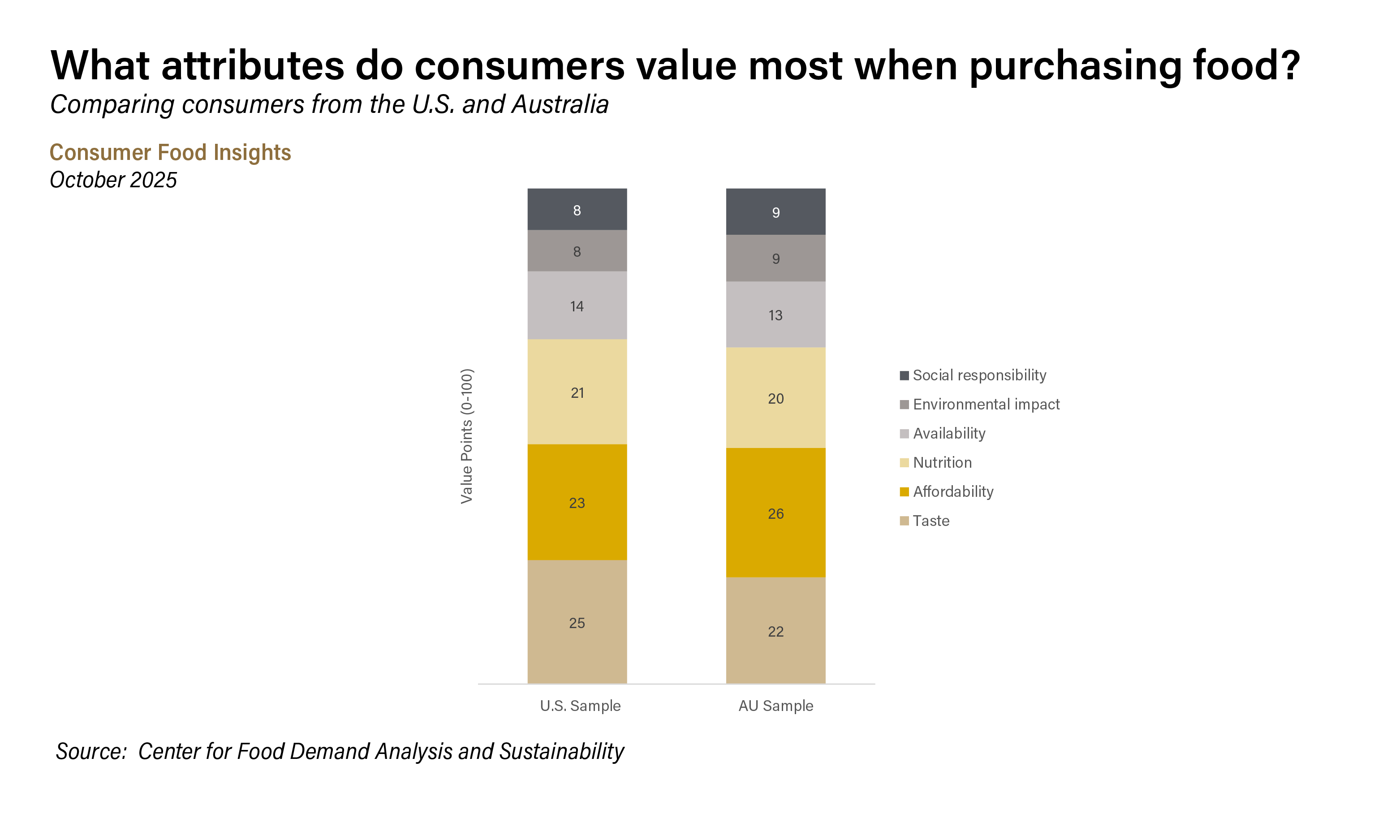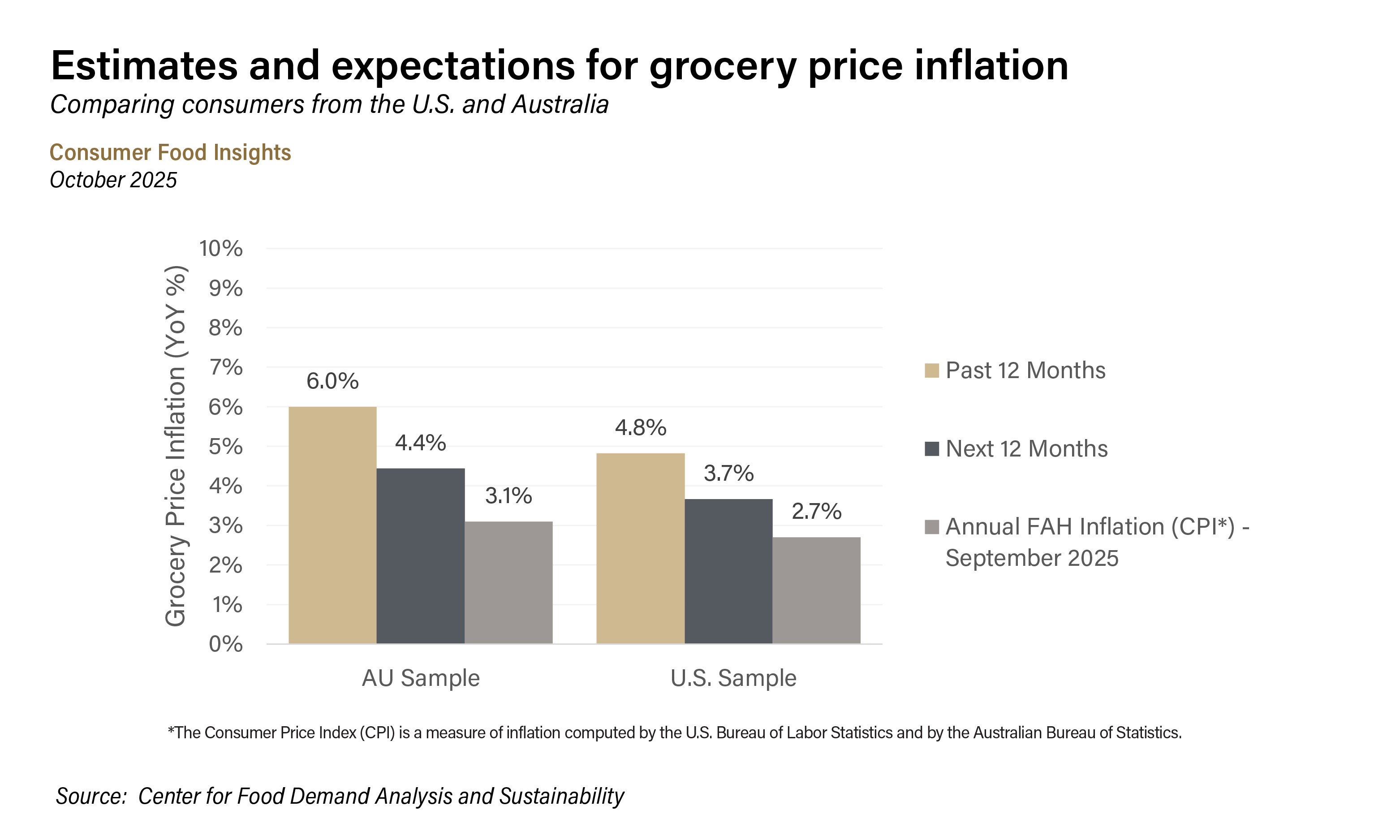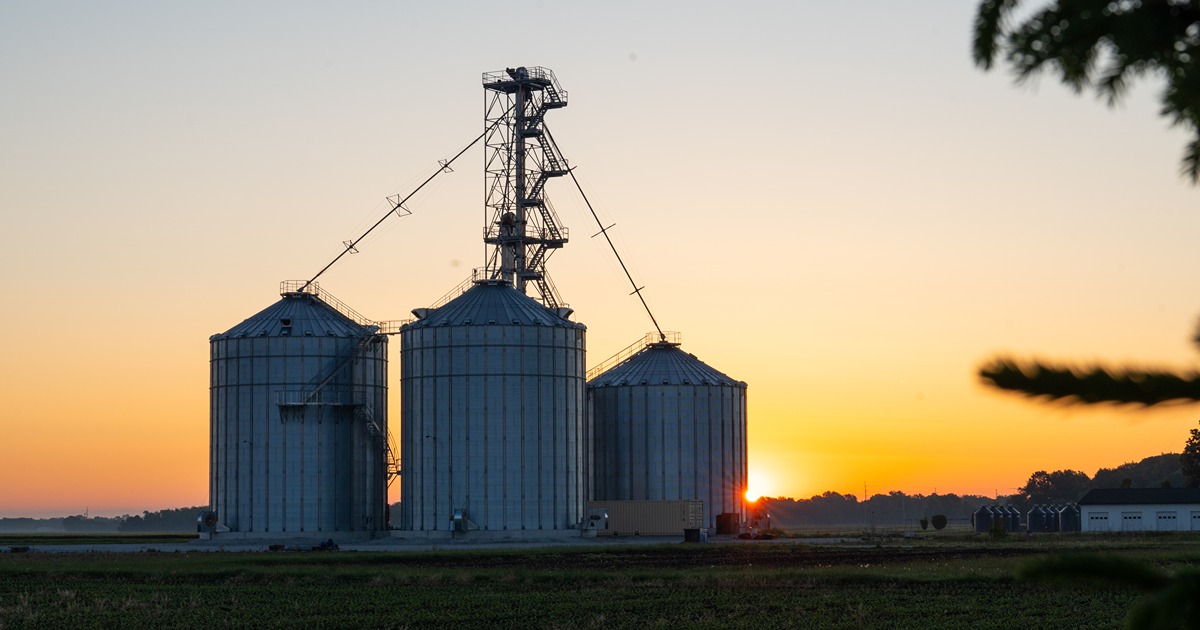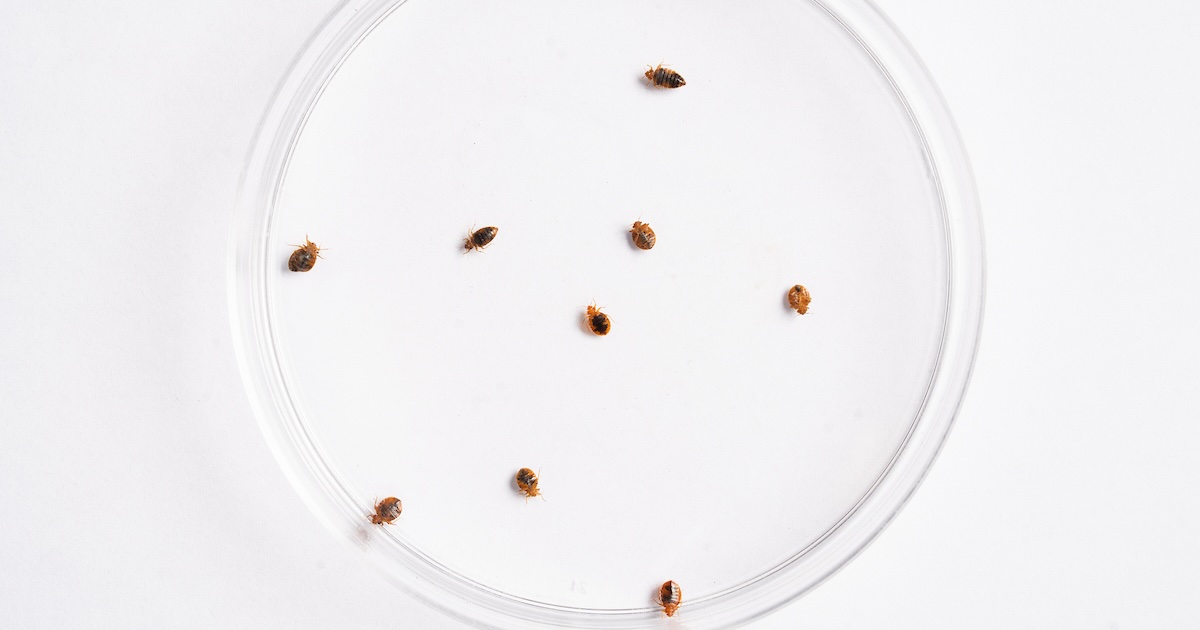Survey compares consumer food insights between U.S. and Australia
WEST LAFAYETTE, Ind. — Consumers in the U.S. and Australia share many similarities when it comes to core food values, diet satisfaction and quality, and experiences, according to the October Consumer Food Insights Report (CFI).
The survey-based report from Purdue University’s Center for Food Demand Analysis and Sustainability (CFDAS) assesses food spending, consumer satisfaction and values, support of agricultural and food policies, and trust in information sources. Purdue experts conducted and evaluated the survey, which included 1,200 consumers across the U.S.
This month’s edition does a cross-country comparison between the U.S. and Australia. CFDAS administered the same questionnaire to its usual U.S. sample and to a comparable national sample in Australia in partnership with applied economist Alec Zuo of Australia’s Flinders University.
“The main takeaway from the study is that consumers’ preferences, perceptions and experiences in the U.S. and Australia have a lot in common,” said the report’s lead author, Joseph Balagtas, professor of agricultural economics at Purdue and director of CFDAS. In addition to the similarities in results, “notable differences are observed in the consumer behavior and beliefs where cultural differences are more likely to appear,” Balagtas said.
Both American and Australian adults scored 67 out of 100 on the Sustainable Food Purchasing Index. Consumers in both countries prioritize taste, affordability and nutrition as the most important food attributes. Environmental impact and social responsibility play smaller roles in purchasing decisions. Australians, however, allocate the most importance to affordability, while American consumers rank taste the highest.
Diet satisfaction is strong in both countries, with over two-thirds of consumers rating their diets as 7 to 10 on the Cantril Scale of well-being. “These high levels of consumer satisfaction reflect food systems in the U.S. and Australia that deliver for consumers amid evolving challenges,” Balagtas said.
Despite high diet satisfaction, estimated diet quality scores place adults from both countries within the “intermediate” classification, below standards of a healthy diet as defined by the Dietary Guidelines for Americans. Both countries’ diet quality scores were evaluated against the standards of a healthy U.S. diet to allow for direct comparison of the scores.
As for spending in the U.S., “We see an $11 decrease in average weekly food-away-from-home expenditures while grocery expenditures remained similar to last month,” said Elijah Bryant, a survey research analyst at CFDAS and a report co-author.
Consumer estimates and expectations for grocery price inflation both declined slightly from September, dropping to 4.8% and 3.7%, respectively. The estimates and expectations for grocery price inflation were both higher in the Australian sample compared to October’s U.S. sample.
“Consumers in both countries place estimated grocery inflation higher than their respective official government estimates, which likely reflects heightened sensitivity and negative sentiment toward grocery costs,” Bryant said.
The largest differences observed between the two countries stem from consumer behavior. “In particular, we see that Australians choose cage-free eggs more often than Americans and are more likely to recycle, compost and reduce food waste.
“While cultural differences are surely at play, key differences in government priorities could help explain these patterns, as Australia has implemented strong policies and incentives to promote sustainability and waste reduction,” he said.
Consumer beliefs in a variety of statements regarding the food system are generally the same between the two countries. “However, one interesting difference is the stronger agreement among Australians that grass-fed beef tastes better than grain-fed, likely reflecting its greater availability compared to the U.S., where grain-fed dominates.”
Trust in food information sources is similar in terms of the types of resources between the U.S. and Australia. In both countries, primary care providers and government health and food agencies rank as the most trusted sources for guidance on healthy and sustainable food. Australians, however, show slightly higher trust in government organizations compared to Americans.
Regarding drinking water, Australians trust their taps, said report co-author Ahmad Wahdat, CFDAS lead research economist based in Australia. “Nearly half — 48% — primarily drink unfiltered tap water, compared to just 31% of U.S. consumers,” Wahdat said.
Most Americans (59%) use bottled water, a far higher percentage than Australia’s 35%. “Two-thirds of Australians rate their tap water quality 8 to 10 out of 10, versus just over half of Americans,” he noted.
U.S. consumers worry more about safety (45%) and taste (37%), while Australians cite water bills (40%) as their top concern. Further, about 1 in 4 respondents in both countries report no major concerns about tap water.
The Center for Food Demand Analysis and Sustainability is part of Purdue’s Next Moves in Plant Sciences 2.0 and uses innovative data analysis shared through user-friendly platforms to improve the food system. In addition to the Consumer Food Insights Report, the center offers a portfolio of online dashboards.
About Purdue Agriculture
Purdue University’s College of Agriculture is one of the world’s leading colleges of agricultural, food, life and natural resource sciences. The college is committed to preparing students to make a difference in whatever careers they pursue; stretching the frontiers of science to discover solutions to some of our most pressing global, regional and local challenges; and, through Purdue Extension and other engagement programs, educating the people of Indiana, the nation and the world to improve their lives and livelihoods. To learn more about Purdue Agriculture, visit this site.
About Purdue University
Purdue University is a public research university leading with excellence at scale. Ranked among top 10 public universities in the United States, Purdue discovers, disseminates and deploys knowledge with a quality and at a scale second to none. More than 106,000 students study at Purdue across multiple campuses, locations and modalities, including more than 57,000 at our main campus locations in West Lafayette and Indianapolis. Committed to affordability and accessibility, Purdue’s main campus has frozen tuition 14 years in a row. See how Purdue never stops in the persistent pursuit of the next giant leap — including its integrated, comprehensive Indianapolis urban expansion; the Mitch Daniels School of Business; Purdue Computes; and the One Health initiative — at https://www.purdue.edu/president/strategic-initiatives.
Writer: Steve Koppes
Media contact: Devyn Ashlea Raver, draver@purdue.edu
Sources: Joseph Balagtas , balagtas@purdue.edu; Elijah Bryant, ehbryant@purdue.edu; Ahmad Wahdat, awahdat@purdue.edu
Agricultural Communications: Maureen Manier, mmanier@purdue.edu, 765-494-8415
Journalist Assets: Publication quality charts and images can be obtained at this link






